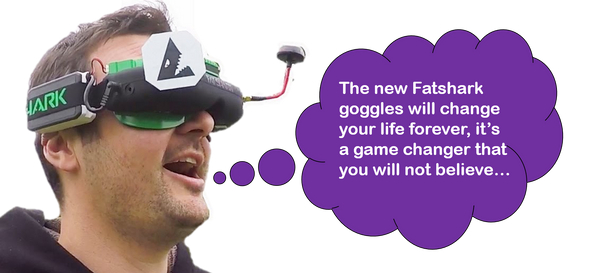So a few days after I shared my comments on what I think about Fatshark vs DJI for HD FPV, my main argument against Fatshark is that we did not have much details nor did we know when it will be released. Well that changed when Fatshark announced more details and that they are shipping out beta units this week. Lets take a look.
The system consists of a small screen with built in RX.. It has HDMI output to your goggles. The air unit is a smallish 30×30 stackable board with an optional OSD board that can be used to change settings. Included is a custom Runcam camera.
As a lot of us suspected, not much has changed from the HDzero system. The board seems to be exactly the same with the only added features being betaflight OSD support which is great.
TL:DR
The Bytefrost system is a step up over analogue, but its not a giant leap forward in HD FPV. It is nice to see that Fatshark are making this system open to let other companies join in to make it better going forward. But ultimately unless the bytefrost system is super affordable, it will have a hard time competing against what DJI currently offer.
Fatshark want the Bytefrost to be open!
My favourite thing about the Fatshark Bytefrost is that they are aiming to make this an open system which is awesome. Fatshark want to focus on headsets so are hoping that other companies and members in the community can take this initial release further down the road. This is great to give us an alternative to the DJI Fpv system.
It is also important to realise that at this stage the bytefrost is still in beta. Although what you see is in indication on what the final system will be like, things can get better.
What does it look like?
Here are two early videos showing what you can expect: Its kind of like a weird combination of analogue and digital video. People who have tested this say it does look much better on a set of Fatshark goggles.
Its not for bandos yet
Although the units are still in beta, right now Fatshark have said this system is preferred for FPV racing, and not freestyle/bandos. This is probably due to the lower TX power (450mW) and possibly that their TX does not take advantage of some wifi features such as MIMO to make the signal better.
It is still an HDzero system, and not truly digital.
The fatshark system is not an entirely traditional digital video signal like you would get on netflix/the DJI goggle which all use a form of h.264/h.265 encoding. Fatshark/ HDzero rather use a form of Analogue High Definition (AHD) from the camera which uses less video lines that is more durable than a MIPI camera that gives the fatshark system the ability to keep the latency stable when the signal degrades. This also means that you can use a standard analgue FPV camera with the digital TX if you wanted as well.
The advantages of this is that you get extra clarity, a lack of colour shifting or wifili lines that cut up the image. And compared to something like the DJI HD fpv system is the video stream maintains constant latency and does not blur the edges when signal is weak. The breakup of the bytefrost system is similar to what you would get with analogue.
Closing thoughts
On first impressions, I am quite disappointed with this. Mainly because Fatshark is one of the companies that could of given DJI a run for the money, but from what I have seen so far, I will be sticking with DJI HD FPV. I understand that Fatshark does not have the same infinite well of R&D budget that DJI have, but I feel the bytefrost system is stuck in the middle ground between analogue and digital. I do like that they have made it open, so hopefully going forward we will see improvements, but fundamentally the system does not seem capable performing true digital video encoding/decoding so will always suffer from inferiors quality.
This system is also nice if you already own some fatshark FPV goggles, as this will be a step up in quality. But the main concern is that unless the bytefrost system comes in cheaper than the DJI Air module, it will not take long for people to start switching over to the DJI system which right now has better clarity and performance when flying on 700mW, plus DJI are working on more FPV releases in the near future.











